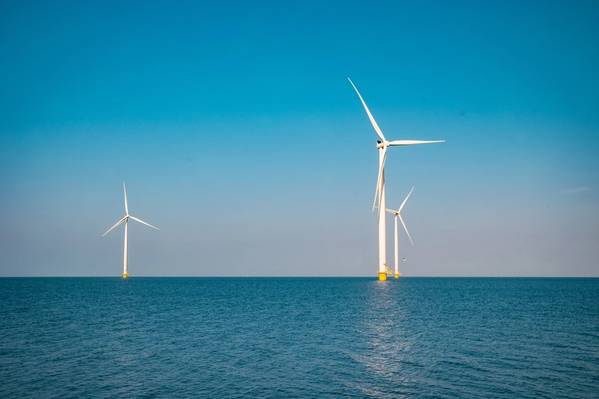
It is clear only a few weeks into 2022 that this year can be a watershed moment for American offshore wind. The Department of the Interior has positioned 2022 to be a record year in terms of offshore wind lease offerings and project greenlights.
At the end of 2021, the Bureau of Ocean Energy Management (BOEM), the regulatory agency responsible for offshore wind lease sales, released the document, Offshore Wind Leasing Path Forward 2021–2025. The document maps out potential new wind lease sales. According to the document, four new lease sales may be offered this year alone.
In places like New England, where energy consumers are besieged by high energy prices, offshore wind offers a new path to help keep energy affordable. In states like California and North Carolina, offshore wind can progress ambitious renewable energy goals. In the Gulf of Mexico, offshore wind can diversify the already impressive lower carbon offshore oil and gas basin.
The first of the new offshore wind lease sales is scheduled for February 2022 in the New York Bight area. This lease sale offshore New York and New Jersey will be a pivotal moment for a once-in-a-generation energy and economic opportunity.
It has been more than three years since the most recent ease sale, the $405 million “bidding bonanza” offshore Massachusetts. In the three years since the Massachusetts lease sale, companies have invested, the market has matured, and the regulatory framework has become more certain.
A 2020 study by Wood Mackenzie estimates that the New York Bight offshore wind lease sale could end up supporting 32,2000 jobs during the development and construction phase of the projects, with more than $3.3 billion in annual wages and $45.9 billion in total capital investment. The Biden Administration estimates the leases offered in the New York Bight sale could eventually power more than 2 million homes.
While the millions of Americans who live onshore from potential offshore wind lease areas await new wind opportunities with open arms, workers and businesses throughout America are ready for the jobs and investment new offshore wind projects will spur.
According to the American Clean Power Association, proposed investments for existing American offshore wind projects total nearly $3.3 billion across manufacturing, ports, vessels, workforce development, and research areas, with many more on the way. These investments stretch beyond the states adjacent to wind lease areas and are impacting communities across America.
In Ingleside, Texas, Kiewit is constructing the first U.S.-built offshore wind substation. The high voltage cable for the Vineyard Wind 1 project is being manufactured in Huntersville, North Carolina. Nexans has invested $310 million in a new facility in Goose Creek, S.C. to produce new undersea cables.
We are closer than ever to the “we are here” moment for American offshore wind.
Federal support will be critical in keeping American offshore wind on track. Offshore wind has been a bipartisan endeavor. Last year’s bipartisan Infrastructure Investment and Jobs Act included $17 billion in funding for waterway and coastal infrastructure. These funds include $450 million per year for the next five years for the Department of Transportation’s Port Infrastructure Development Program, a critical investment that will help American ports keep pace with rising offshore wind needs.
Before the massive budget reconciliation package was seemingly tabled, favorable offshore wind provisions, including production tax credits and investment tax credits, appeared to be set for inclusion in the Build Back Better Act. These provisions could find a second life if and when Congress decides to move a separate and smaller energy and environment legislative package.
As the Biden Administration reviews and reworks regulations, such as the National Environmental Policy Act (NEPA) and the Migratory Bird Treaty Act (MBTA), it will be important to ensure changes to bedrock environmental policy are done in a way that enhances environmental protection and energy development. Environmental stewardship and energy and economic progress are not mutually exclusive; NOIA members have consistently been leaders in both arenas.
Promulgating rules that balance the need for energy development with effective environmental stewardship will provide the certainty massive investments require. A more efficient, effective, and timely regulatory process will help ensure NOIA members continue to build a better world through energy security, economic growth, and lower emissions energy.
Opportunity and action are aligning. If smart and balanced regulatory reforms are pursued, Congress maintains its support, and leasing and permitting momentum is kept up, we are looking at a banner year for American offshore wind.



